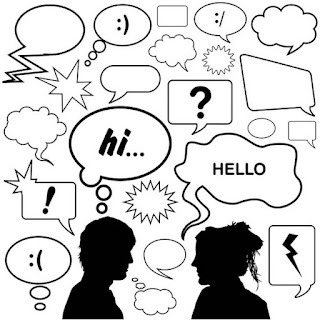DIALOGUE
A dialogue is a literary technique in which writers employ two or more characters to be engaged in conversation with one another. In literature, it is a conversational passage, or a spoken or written exchange of conversation in a group, or between two persons directed towards a particular subject. The use of dialogues can be seen back in classical literature, especially in Plato’s Republic. Several other philosophers also used this technique for rhetorical and argumentative purposes. Generally, it makes a literary work enjoyable and lively.
EXAMPLES
Example #1: Wuthering Heights (By Emily Bronte)
“Now he is here,” I exclaimed. “For Heaven’s sake, hurry down! Do be quick; and stay among the trees till he is fairly in.”“I must go, Cathy,” said Heathcliff, seeking to extricate himself from his companion’s arms. “I won’t stray five yards from your window…”“For one hour,” he pleaded earnestly.“Not for one minute,” she replied.“I must–Linton will be up immediately,” persisted the intruder.
Miss Bronte has employed surprises, opposition, and reversals in this dialogue like will-it-happen, when he says, “But, if I live, I’ll see you …” She has inserted these expressions in order to develop conflict in the plot.
Example #2: Crime and Punishment (By Fyodor Dostoevsky)
“But who did he tell it to? You and me?”“And Porfiry.”“What does it matter?”“And, by the way, do you have any influence over them, his mother and sister? Tell them to be more careful with him today …”“They’ll get on all right!” Razumikhin answered reluctantly.“Why is he so set against this Luzhin? A man with money and she doesn’t dislike him …“But what business is it of yours?” Razumikhin cried with annoyance.
In this excerpt, notice the use of conflict, emotions, information, conflict, reversal, and opposition flowing by. The ideas and information are expressed with perfect timing, but here an important point is that the characters are not responding with a definite answer. This is a beautiful piece of dialogue.
Example #3: A Dialogue Between Caliban and Ariel (By John Fuller)
Cal. “Have you no visions that you cannot name?”Ar. “A picture should extend beyond its frame,
There being no limitation
To bright reality:
For all their declaration
And complexity,
Words cannot see.”
Fuller has written this poem in the dialogue form. Two characters, Caliban and Ariel, are conversing, revealing the conflict, as Caliban asks questions, and Ariel gives answers that make the poem alive and interesting.
Example #4: Pride and Prejudice (By Jane Austen)
“Oh! Single, my dear, to be sure! A single man of large fortune; four or five thousand a year. What a fine thing for our girls!”“How so? How can it affect them?”“My dear Mr. Bennet, “replied his wife, “how can you be so tiresome! You must know that I am thinking of his marrying one of them…My dear, you flatter me. I certainly have had my share of beauty, but I do not pretend to be anything extraordinary now…she ought to give over thinking of her own beauty.”
Austen explores the characters in her novels through dialogue. Likewise, in this conversation, the author unfolds Mrs. Bennet’s character as being stupid and worthless. Mr. Bennet makes fun of her wife, and this dialogue sums up their relationship and gives hints about their personalities.

No comments:
Post a Comment